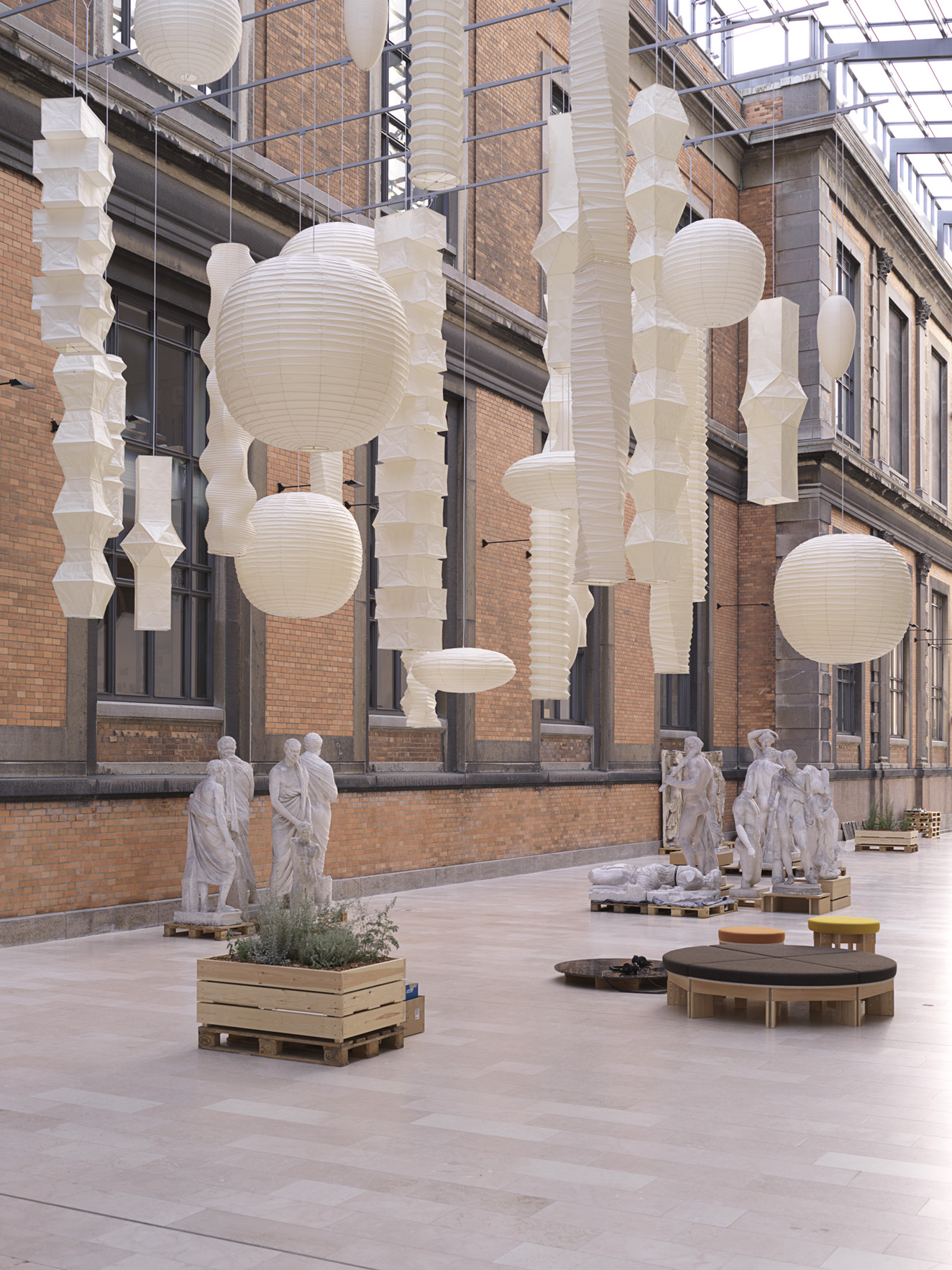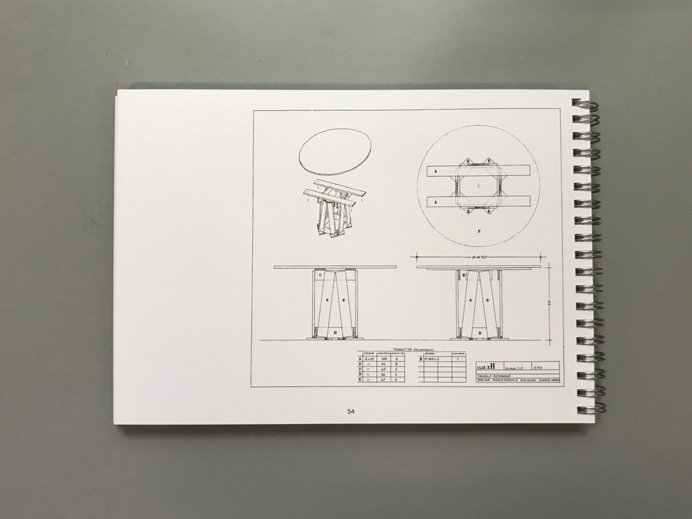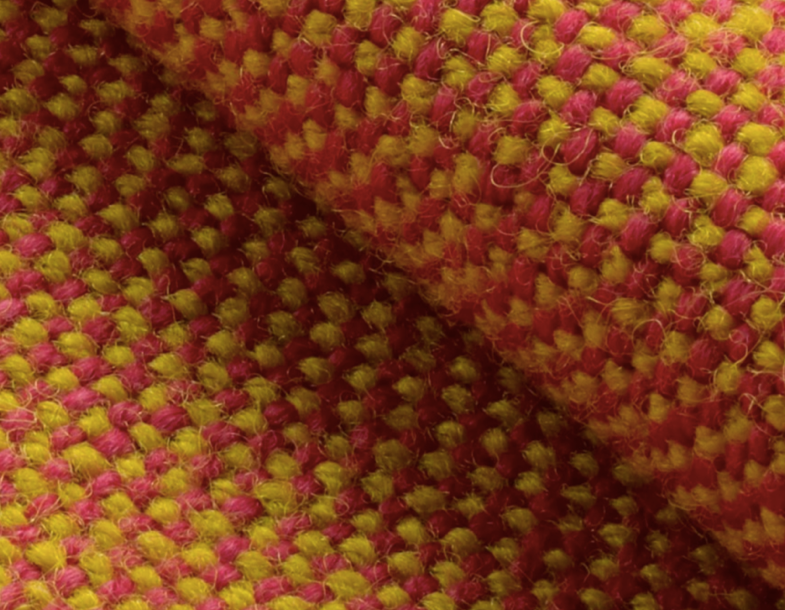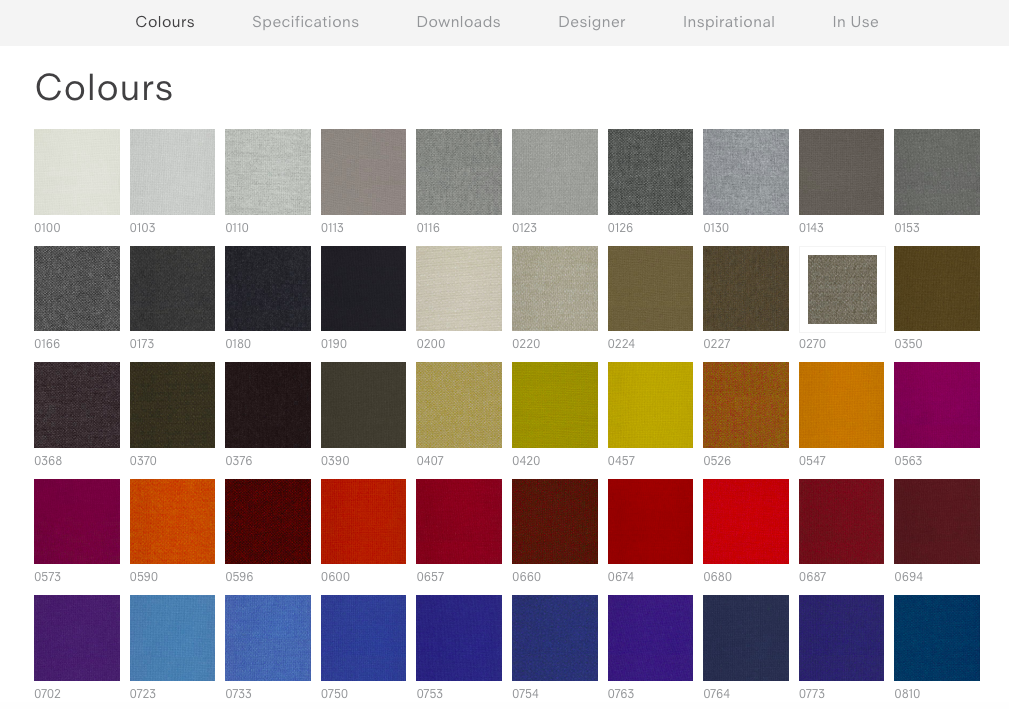In Borrowed Scenery of Danh Vo #1, Isamu Noguchi’s Akari light sculptures, Untitled series (inspired by Enzo Mari’s Project 1123 and Nanna Ditzel’s Hallingdal fabric), Home for Books and “— |” Bookshelf intersect via Danh Vo’s view. We noticed that Danh’s research and gaze focuses upon the clusters of light, relaxing space for the body and reading space to meet and merge in the same space. Entering Borrowed Scenery of Danh Vo #1, we can feel Danh’s different take on the sensibilities of reality, in which his organizations and mobilizations of the natural, intellectual and cultural flows of individuals, interweaving like a river basin, a piece of starry sky.

 Borrowed Scenery of Danh Vo #1,Mirrored Gardens, 2019
Borrowed Scenery of Danh Vo #1,Mirrored Gardens, 2019
Borrowed Scenery No.1—Isamu Noguchi: Akari Light Sculptures
‘The light of Akari is like the light of the sun filtered through the paper of shoji. The harshness of electricity is thus transformed through the magic of paper back to the light of our origin – the sun – so that its warmth may continue to fill our rooms at night.’
—Isamu Noguchi
 Isamu Noguchi and Akari Light Sculptures, 1951, image from the Internet
Isamu Noguchi and Akari Light Sculptures, 1951, image from the Internet
 Exhibition view of “Danh Vo: Take My Breath Away”, National Gallery of Denmark, Copenhagen, 2018, Courtesy of the artist
Exhibition view of “Danh Vo: Take My Breath Away”, National Gallery of Denmark, Copenhagen, 2018, Courtesy of the artist



 Akari light sculptures under daylight: Borrowed Scenery of Danh Vo #1,Mirrored Gardens, 2019
Akari light sculptures under daylight: Borrowed Scenery of Danh Vo #1,Mirrored Gardens, 2019
 Akari light sculptures at night; Borrowed Scenery of Danh Vo #1, Mirrored Gardens, 2019
Akari light sculptures at night; Borrowed Scenery of Danh Vo #1, Mirrored Gardens, 2019
The oeuvre of Japanese-American artist and designer Isamu Noguchi (1904–1988) is unusually multi- faceted. In addition to sculptures, he also created stage sets, furniture, lighting and interiors, as well as outdoor plazas and gardens. As a sculptor, his interest was not restricted to materials and form, but also extended to spatial effects and interior designs. Noguchi intended his art to serve both practical and social functions, and his sculptural style exerted a lasting influence on the idiom of organic design in the 1950s.
In 1951 Isamu Noguchi began to design the Akari Light Sculptures, works characterised by weightless luminosity. He chose the name ‘akari’ for these objects, a word that means ‘light’ in Japanese, connoting both illumination and physical lightness. During a journey to Japan, Noguchi paid a visit to Gifu, a town known for its manufacture of paper parasols and lanterns. While there he sketched his first two Akari Light Sculptures, and over the following years he created a total of more than 100 models, consisting of table, floor and ceiling lamps ranging in size from 24 to 290 cm.
Each luminaire is meticulously crafted by hand in the Ozeki workshop, a traditional family-run company based in Gifu. In a first step, bamboo rods are stretched across the original wooden forms designed by Noguchi to make the framework that determines the object’s shape. Handmade shoji paper, derived from the bark of the mulberry tree, is cut in strips to fit the size and shape of the lamp and then glued to the bamboo ribbing. After the glue has dried, the wooden form is removed and the shade can be folded. The Akari Light Sculptures are packed for shipping or storage in flat boxes developed especially for the luminaires.
The Akari Light Sculptures are marked with a stylised sun-and-moon logo, which also resemble the corresponding Japanese characters. They guarantee the authenticity of each product.
Borrowed Scenery No.2 –Untitled (Wooden structure inspired by Enzo Mari ́s Autoprogettazione, and fabric designed by Nanna Ditzel)
In 1974, Italian designer and artist Enzo Mari launched Project 1123 for the exhibition program at Galleria Milano, in which the furniture designs and papers were available to the public, inviting any individual who is interested in design to build a furniture for himself, during which one obtains a personal experience of design. Enzo Mari called it “Autoproprogettazione,” meaning self-design. Through the idea and methods of self-design and forms designed by a down-to-earth understanding of wood materials, craftsmanship and furniture structures, Project 1123 provides a concretized medium for thinking around design, Enzo Mari in the preface of Autoprogettazione? (second edition, 2002, English supplement, 2017), he wrote:“The quality/quantity ratio is central to all industrial production: quality is determined when the shape of a product doesn’t only ‘appear’ but, when it simply ‘is’.” In this statement, Enzo Mari emphasized that the forms of objects achieve not appearances, but a direct, simple, precise expression of the fundamental core of design. Value was found in such thinking about design by Danh Vo. He developed from Project 1123 xH (a round table 70cm high, 120cm in diameter, see image above) with his grip of the project’s overall design vocabulary a series of wooden structures based on Project 1123. The wooden structures in this series have various sizes, exploring the diversities of diameters, heights, materials for the round surface.
 Enzo Mari (1932- ), photo was taken in Enzo Mari’s studio in Milan with models from Project 1123, image from internet.
Enzo Mari (1932- ), photo was taken in Enzo Mari’s studio in Milan with models from Project 1123, image from internet.
 Enzo Mari, Project 1123×H, Image from autoprogettazione? (English supplement in 2017 which bases on the second Edition in 2002; Page 54), Photo by Wen Peng.
Enzo Mari, Project 1123×H, Image from autoprogettazione? (English supplement in 2017 which bases on the second Edition in 2002; Page 54), Photo by Wen Peng.
The fabric that Danh Vo has reintroduced for “Untitled” series is from Nanna Ditzel, the most essential female designer of “Danish Modern” after WWII and thereby her historic fabric design: Hallingdal was rediscovered.
 the fabric’s captivating dual nature of Hallingdal 65
the fabric’s captivating dual nature of Hallingdal 65
Of Nanna Ditzel’s many iconic designs, the fabric Hallingdal has been in continuous production since 1965. Archetypal in its simplicity, Hallingdal is a balanced plain weave that combines two colors of wool and viscose yarn in an extremely durable construction. In describing Hallingdal ’ s durability, Anders Byriel, Kvadrat’s CEO, uses the colloquial term hufterproof, a Dutch expression for “virtual indestructibility,” and adds, “We don’t make products like this anymore.” Hallingdal has been restored to Ditzel’s original color palette from 1965, the fabric comes in 58 colourways. The versatile palette includes neutral and strong, primary colours, as well as the designer’s favourite hues: turquoise and pink. And although Nanna Ditzel once remarked that “if a design is timeless, it is never relevant,” she would surely be gratified to see herself proven wrong.
 Hallingdal 65’s colourways
Hallingdal 65’s colourways

 Danh Vo: Untitled#22 (Wooden structure inspired by Enzo Mari ́s Autoprogettazione, and fabric designed by Nanna Ditzel); Borrowed Scenery of Danh Vo #1,Mirrored Gardens, 2019. Photo by Wen Peng.
Danh Vo: Untitled#22 (Wooden structure inspired by Enzo Mari ́s Autoprogettazione, and fabric designed by Nanna Ditzel); Borrowed Scenery of Danh Vo #1,Mirrored Gardens, 2019. Photo by Wen Peng.
 Danh Vo: Untitled#7 (Wooden structure inspired by Enzo Mari ́s Autoprogettazione, and fabric designed by Nanna Ditzel); Borrowed Scenery of Danh Vo #1,Mirrored Gardens, 2019. Photo by Wen Peng.
Danh Vo: Untitled#7 (Wooden structure inspired by Enzo Mari ́s Autoprogettazione, and fabric designed by Nanna Ditzel); Borrowed Scenery of Danh Vo #1,Mirrored Gardens, 2019. Photo by Wen Peng.
Apart from the daily utility of the Untitled series( as round Daybeds), Danh Vo transforms them into sculptures or plinths for the installations in the exhibition contexts, seeing them through the lens of sculptures, which together with the sculptures or installations that are placed upon them form a complete assembly of works.
 “Danh Vo: Take My Breath Away” exhibition view, national gallery of Denmark, Denmark, 2018. Photos courtesy of National Gallery of Denmark.
“Danh Vo: Take My Breath Away” exhibition view, national gallery of Denmark, Denmark, 2018. Photos courtesy of National Gallery of Denmark.
 “Counterpart: Noguchi for Danh Vo” exhibition view, M+ museum, Hong Kong, 2018. Photos courtesy of Vitamin Archive.
“Counterpart: Noguchi for Danh Vo” exhibition view, M+ museum, Hong Kong, 2018. Photos courtesy of Vitamin Archive.
Borrowed Scenery No.3 – Home for Books and “— |” Bookshelf
About Home for Books and “— |” Bookshelf, an important component is to explore the space of a bookshelf. Home for Books is a cubic garden space for books, where books can form a three-dimensional assembly of reading space. Small and airy as it is, our sight can examine every book with care and gaze, further eliciting an opportunity for continual thinking of serial and thematic reading; “— |” Bookshelf is a vertical rectangular space that was designed meticulously to divide the topography and spatiality of the books, a medium-size space of reading materials based on this functional extension from putting books on the shelf to categorizing reading materials is provided, opening up the thinking around the relationship between reading materials. When those reading materials begin to circulate, the life of the bookshelf as a useful framework will shines out.
The cubic forms of Home for Books and “— |” Bookshelf, in the space of Borrowed Scenery of Danh Vo #1, Mirrored Gardens, 2019
1. Home for Books
This is architecture for books, an ideal home for them. Books find their own residential area according to their own size and personality. They are given a living space to breathe in, not just in a stack of paper anymore. At the same time, the reader is granted the freedom to enter and visit this home and place it wherever. The book and its home coexist together, and in their harmony become scenery. In this way, they form a garden of books.
Home for Books uses traditional tenon and mortise, mainly the triangular tenon and double-mitred tenon——tighter and firmer in the joints of their structures. Tenon-and-mortise is a significant technique in traditional woodcraft furniture, and even the core, due to its close direct relation with the craftsmanship embodied in the processes of the formation and crafting of the furniture. The meticulous execution of this Ambila version of Home for Books allows its design concept to show through its form, and a cogent collaboration between the designer and the carpenter.

 Home for Books, in the space of Borrowed Scenery of Danh Vo #1, Mirrored Gardens, 2019
Home for Books, in the space of Borrowed Scenery of Danh Vo #1, Mirrored Gardens, 2019
2. “— |” Bookshelf
Horizontal and perpendicular lines can create characters in Chinese Calligraphy and traditional Chinese paintings. It is the starting point of creation. The “— |” Bookshelf is constructed with various horizontal and perpendicular lines as a simple framing structure. The divisions of spaces reflect different lights and spaces.
The light can go through the “— |” Bookshelf from both directions. In the meanwhile, it not only can stand by wall, but the bookshelf can be used in both back and front sides. There are 13 cells in different sizes, which can be used freely.
“— |” Bookshelf provides the possibility to categorize your books while they connect each other as landscapes. It creates conceptual spaces for conversations between items, and between items and individuals.


 A pair of “— |” Bookshelf, in the space of Borrowed Scenery of Danh Vo #1, Mirrored Gardens, 2019.
A pair of “— |” Bookshelf, in the space of Borrowed Scenery of Danh Vo #1, Mirrored Gardens, 2019.
The Borrowed Scenery of Danh Vo #1, which is constructed by three borrowed scenes, is not fixed in a specific physical space. Its form can be elastically extended with the specific physical space that accommodates it. It is mobile and long live, presented in different spatial situations, can generate different statuses of use and communication.





 Borrowed Scenery of Danh Vo #1 @Beijing Contemporary Art Expo,2019
Borrowed Scenery of Danh Vo #1 @Beijing Contemporary Art Expo,2019
In Borrowed Scenery of Danh Vo #1, Danh Vo uses objects as medium and space as field, invites the users of the space to open and expand the perceptive experiences in addition to use. The creators of these objects traverse interfaces of human knowledge in a concretized thinking practice unfolding via objects, adapting to and breaking through the human measurements, when diverse values encounter one another here. The space of contents and the content of space carefully blended by Danh provided an extra space for the scenes of the living space and another kind of imagination about objects, human and space for the ones who entered.
Image and Text: the shop, ©Authors, the shop, 2019
Tips: if you are interested in the Spaces, please contact us via. mail@theshop.art